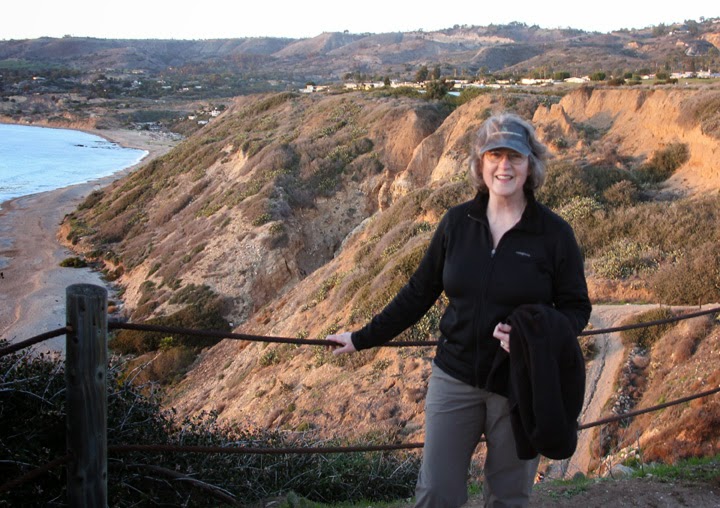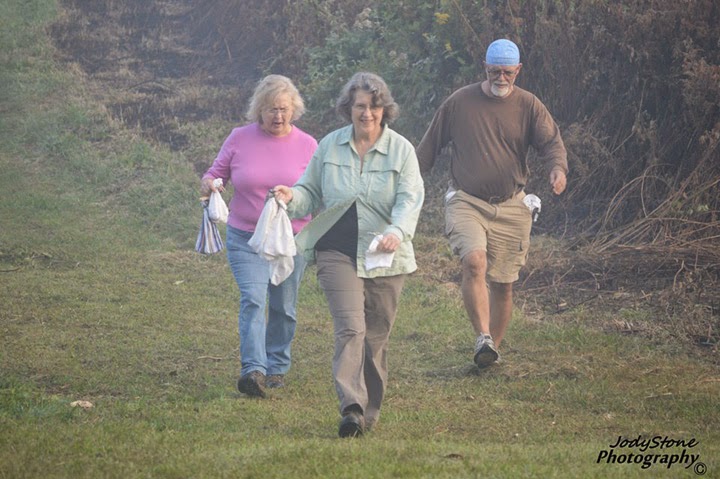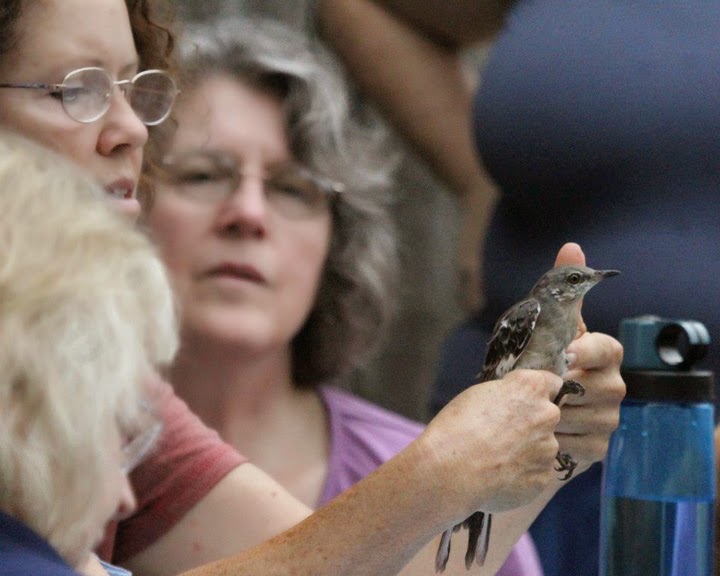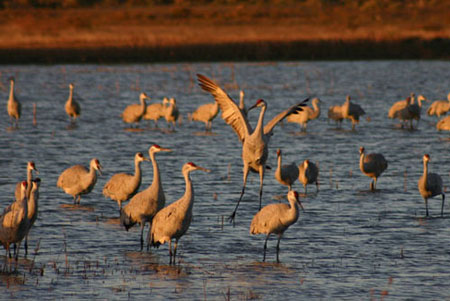Though its late in the growing season, I had the urge to plant flowers earlier this week, a few of my favorite perennials--coneflowers and coreopsis. I think the urge may have been prompted by simply seeing these flowers at one of my favorite garden shops, while earlier in the season I had been unable to find them.
Skipper on Lantana
But also, the increase in hummingbird activity was an encouragement. As migrants pass through, I'm eager to provide plenty of energy-producing nectar to help them along their journey. Males were guarding the feeders yesterday, three at a time, dividing the four feeders into their three separate territories. It's fascinating to watch, each showing disinterest in the activity at a feeder only a few feet away from the one they're guarding. Today, it was clear there are also plenty of juveniles coming through, fanning tails and chirping loudly as they encountered each other. Delightful company while I'm working in the flowers, sketching, or just enjoying the patio.
And today, while photographing a Silvery Checkerspot, I became intrigued with the skippers that are visiting the flowers. In the past, skippers have struck me as drab brown butterflies of little interest. But today, through my camera's lens, I saw them in an entirely different way, with subtle color, expressive big eyed faces, and the appearance of floppy antennae.
Silvery Checkerspot on Coreopsis grandiflora, above. I think the seed pod is exquisite, too, with that mop of orange! In the images below, skippers on white and purple coneflowers.
I have Kaufman's Field Guide to Butterflies of North American, but I'm making no attempt to identify which skippers you see in these photos. Roughly one-third of all butterflies fall into the skipper family, a species group with subtle distinctions and high-speed flight patterns, providing a welcomed challenge to experienced butterfly enthusiasts. I'm a beginner, so I'll welcome ID help from those of you out there who have skipper experience.
Tonight, I've been watching the reports as hurricane Irene progresses northward up the east coast, and feeling concern for friends and family, as well as, all of those in the path of this storm. Sending heart-felt wishes for safety and comfort as people endure storm-related hardships in the hours ahead.
Below, one of my watercolor sketches of a white coneflower.
Links and resources:
To see more sketches of the garden, visit, Coneflowers at Vickie's Sketchbook
Information on skippers from Bug Guide and Wiki
Wiki on Coneflowers
Wiki on Coreopsis; this particular variety is Coreopsis grandiflora.
Kaufman's Field Guide to Butterflies of North America
Saturday, August 27, 2011
Sunday, August 14, 2011
Purple Martins--The Excitement of Fledging
If I needed any reminder of why watching birds is so compelling for me, my visits to the purple martin colony gave me exactly that. Tons of fun, new information, and surprises!
For example, haven't you always heard that purple martins are loved by landowners because they are insectivores and eat lots of mosquitoes? This notion turns out to be a compelling myth. They do eat lots of insects including dragonflies, damselflies, June bugs, beetles, grasshoppers, cicadas, and many others, but they rarely encounter mosquitoes. In an intensive 7-year study conducted by the Purple Martin Conservation Association, no mosquitoes were found among the 500 different food items purple martins brought to their young. The simple reason, purple martins hunt for food in flight, high up in the sky during the day and mosquitoes hang out in low, damp places during the same hours. And in actually, purple martin landlords love purple martins because they love purple martins!
Female purple martin study
For example, haven't you always heard that purple martins are loved by landowners because they are insectivores and eat lots of mosquitoes? This notion turns out to be a compelling myth. They do eat lots of insects including dragonflies, damselflies, June bugs, beetles, grasshoppers, cicadas, and many others, but they rarely encounter mosquitoes. In an intensive 7-year study conducted by the Purple Martin Conservation Association, no mosquitoes were found among the 500 different food items purple martins brought to their young. The simple reason, purple martins hunt for food in flight, high up in the sky during the day and mosquitoes hang out in low, damp places during the same hours. And in actually, purple martin landlords love purple martins because they love purple martins!
Female purple martin study
Even though, I had seen images, I also was in disbelief about the huge size of the dragonflies that martins capture while on the wing. I thought, surely we don't have dragonflies that large in Tennessee, maybe west or north of us. But that doubt was quickly abated as I witnessed martins bringing enormous dragonflies to their young.
And as the nesting season progressed into late July, I had the pleasure of seeing curious nestlings poking their heads out of gourd cavities as they watched all the activity going on around them. If you've ever visited a martin colony, you know there is plenty of activity, especially when fledging is in progress.
I spotted one nestling that was so curious she was stretching far out of the gourd opening, moving farther and farther out until she was precariously perched on the deck. I felt certain she was going to fall off. But with all that curiosity and the instinct to fly, she suddenly spread her wings and off she flew on her first flight with Mom following and vocalizing in close pursuit! Breathtaking. I was so excited. I had just watched a purple martin nestling fledge!
I spotted one nestling that was so curious she was stretching far out of the gourd opening, moving farther and farther out until she was precariously perched on the deck. I felt certain she was going to fall off. But with all that curiosity and the instinct to fly, she suddenly spread her wings and off she flew on her first flight with Mom following and vocalizing in close pursuit! Breathtaking. I was so excited. I had just watched a purple martin nestling fledge!
And what happens once all those nestlings fledge? Martins remain at the nesting colony site for a while during the fledging period while the young strengthen their flying skills, but soon after, members of the colony move on to communal roosts as they begin migration to South America. For early nesters this migration begins in June, for others it is occurring now. A given roost may have birds from many different areas, and the members of the roost will change daily. The roost shown in the video below is in Nashville, TN and was photographed in August of 2010. In June of this year it was reported to have more than 10,000 martins gathering. An incredible sight and sound. (There is no sound on this video).
Links and Resources:
To listen to purple martins vocalize visit Cornell's page on purple martins.
Visit the Purple Martin Conservation Association's page on the purple martin roost.
To see all my posts on my observations of this colony visit: purple martins. The most recent post will be first.
You may also want to visit my Purple Martin with Prey painting and watch it take shape at Vickie's Sketchbook.
Saturday, August 6, 2011
Purple Martins--Nesting Behavior
It is always amazing to me when a bird hangs in there, remaining on the nest while a nest-check is taking place.
One of the tasks of a purple martin landlord is checking the nests to record progress or problems as they look after the welfare of their purple martin colony. On one of my visits this summer to a martin colony in my area, I had the pleasure of being present for one of these nest checks. Not only was it intriguing to see the array of twigs, leaves and other items the martins add to their nests, but also to see the several martin females that remained on their nests while the nest check was in progress. Keep in mind, the rows of artificial gourd housing are lowered with a pulley-like system, so the bird is not only remaining on the nest through this lowering process, but through other nest checks until the portal in her gourd is finally opened for viewing.
Personally, I call that courage. But it is also true, that when landlords visit their birds on a regular basis, the birds become familiar with the landlord and are not alarmed when nest checks take place. The purple martin's historical reliance on housing provided by humans and preference for the safety of living near human activity, may also help foster this trust.
In my last post I showed you a purple martin female trying to maneuver a long twig into her nest cavity. Now, take a look at the pine cone in the nest above, and the image below. The cone was almost the size of my hand, clearly larger than the smaller, more oblong cavity opening that it was maneuvered through.
One has to wonder how a martin managed to grip an object this size, let alone, pull it into the nest cavity with an opening no larger than the one shown below!
And then there's the leaves.
A universal habit of purple martins is the addition of fresh green leaves to the nest, beginning with the completion of the loose nest structure and continuing until the eggs hatch. Both the male and female participate in this activity, but observations seem to indicate that males become more preoccupied with this task.
Above, you see a female martin plucking a maple leaf, and below, a male martin perched with a pear leaf before taking it into the nest.
A report on the Purple Martin Conservation Association website gives some delightful descriptions of this leaf gathering activity (link provided below). Practical theories for why fresh leaves are added to the nest include parasite control and thermal regulation, but the real purpose for adding the leaves remains a mystery.
August 9th: Update--Pine cones added by hand not beak!
Because the pine cones seen in the above nests did not make sense as nesting material, and one is quite large, I inquired about this occurrence at the Purple Martin Conservation Association, and also with the colony landlord. Many purple martin landlords collect pine straw and place it in the nesting cavities prior to martin nesting activity to encourage nest selection. Pine needles are often raked into a pile, and along with them, some pine cones. When grabbing a handful of straw to place in a nest through the opened portal, sometimes a cone that is not open won't be felt. This is what the landlord believed happened, especially in the case of the larger pine cone.
Coming up: More fun stories about purple martins!
Links and Resources:
To see all my posts on this colony visit: purple martins. The most recent post will be first.
Visit my Purple Martin with Prey painting and watch it take shape at Vickie's Sketchbook.
South Austin, TX--Saving Martin Babies from Heat
Subscribe to:
Posts (Atom)
Ocean Trail at Palos Verdes Nature Preserve, California--2015

Bird-banding at Seven Islands State Birding Park--2014

Photo courtesy of Jody Stone
Bird-banding at Seven Islands

Photo courtesy of Karen Wilkenson
Enjoying Gray Jays in Churchill!--2014

Photo courtesy of Blue Sky Expeditions
Smithsonian National Zoo with one of my Whooping Crane banners and son, John--2014

The Incredible Muir Woods near Stinson Beach, CA--2014

Photo courtesy of Wendy Pitts Reeves
Me and Denali--2012

Photo courtesy of Bob King
For the Love of It...
...the sage sees heaven reflected in Nature as in a mirror, and he pursues this Art, not for the sake of gold or silver, but for the love of the knowledge which it reveals.
Sendivogius (1750)
Sendivogius (1750)
Your Uncapped Creativity...

"There is a vitality, a life force, an energy, a quickening that is translated through you into action; and because there is only one of you in all time, this expression is unique. If you block it, it will never exist through any other medium and it will be lost. The world will not have it. You must keep that channel open. It is not for you to determine how good it is, nor how valuable. Nor how it compares with other expressions. It is for you to keep it yours, clearly and directly." ----the great dancer, Martha Graham






















